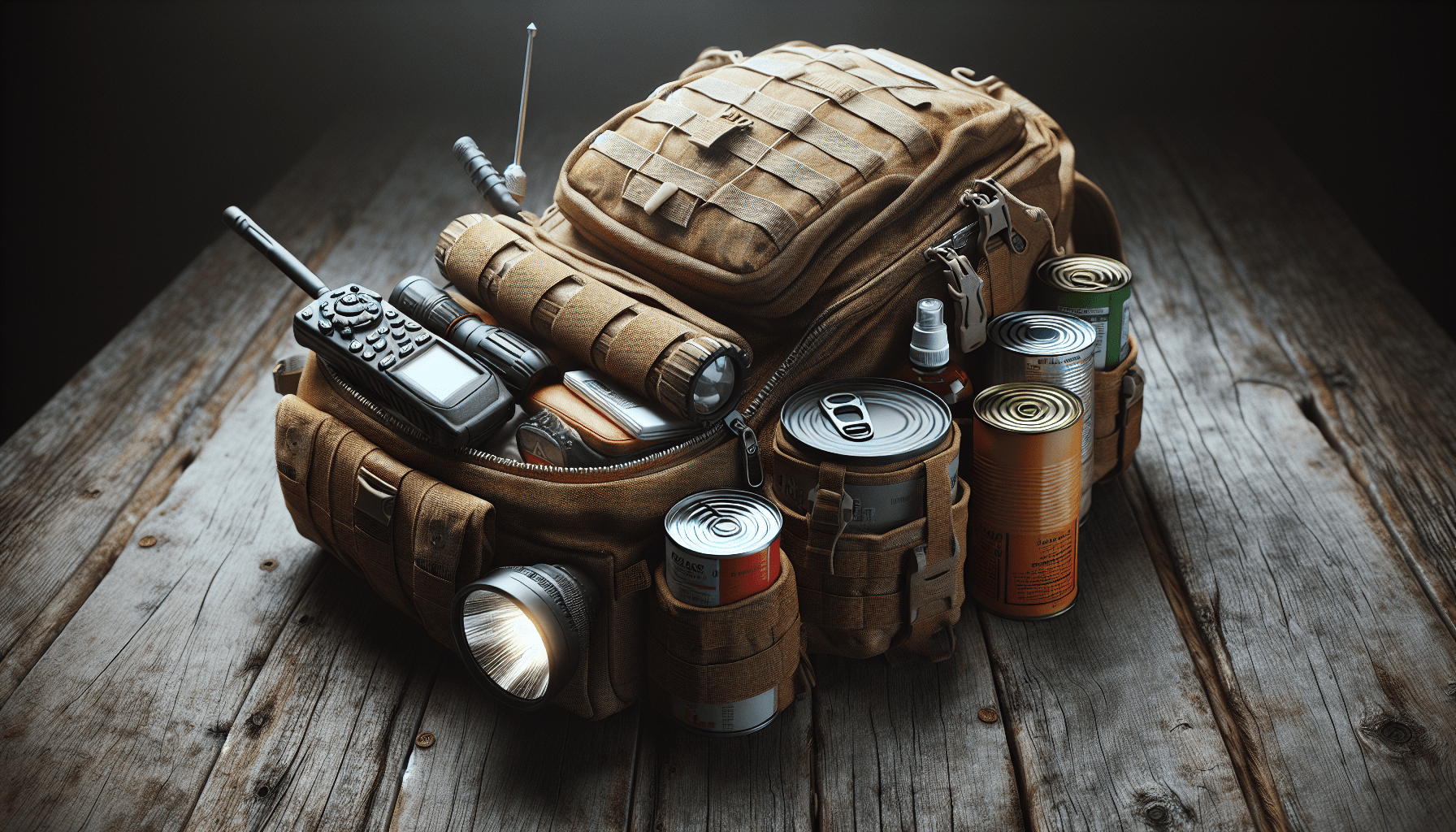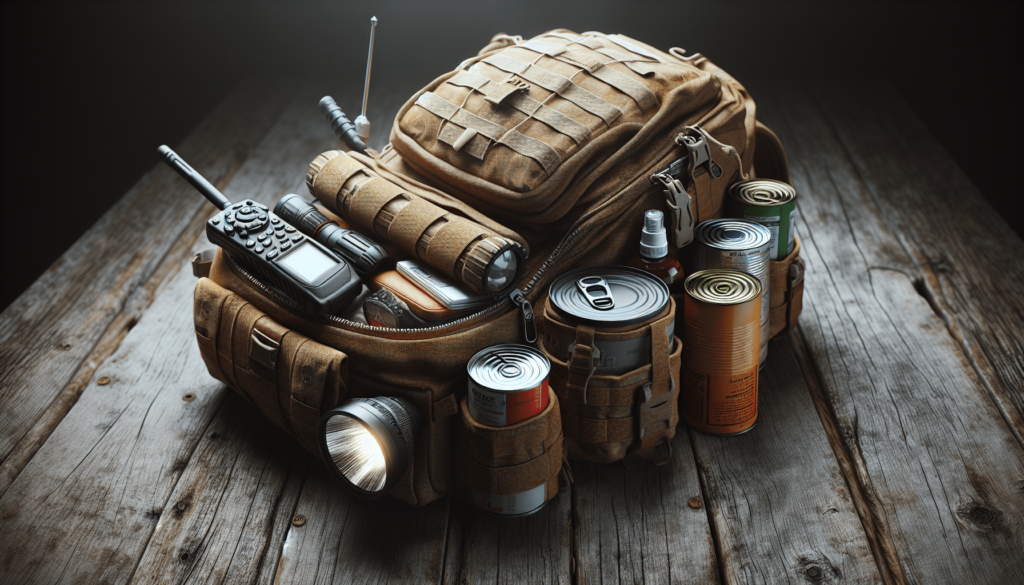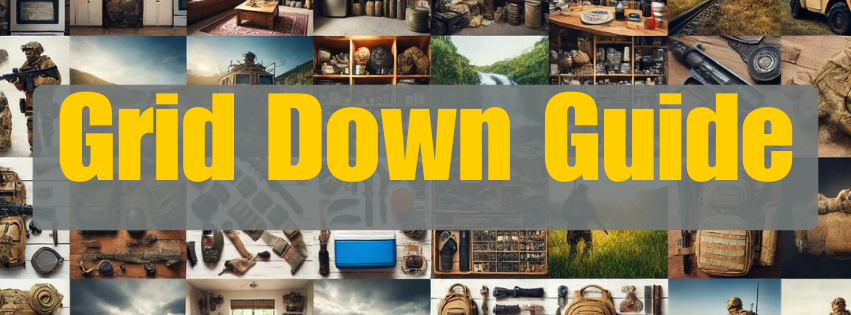
What makes someone a prepper? Is it the stockpile of canned goods, the backup generator in the garage, or perhaps the detailed plan of what to do when the government inevitably collapses under the weight of its problems? These questions have intrigued me as I delve into the phenomenon of prepping in the U.S. But the real head-scratcher is: What percentage of people in the U.S. are actually preppers?
Defining Who a Prepper Is
Before diving into the numbers, it’s essential to define what it means to be a prepper. The term “prepper” might evoke images of someone wearing camouflage, building bunkers, and hoarding supplies. While those images aren’t entirely inaccurate, they don’t capture the full range of what prepping can entail. At its core, prepping is about being self-reliant and prepared for various emergencies. These can include natural disasters like hurricanes and earthquakes, economic meltdowns, or even, yes, the zombie apocalypse that pop culture loves to hype.
Different Levels of Prepping
Preppers aren’t all cut from the same cloth. Some folks might just have a week’s worth of bottled water and extra batteries, while others have a full year’s supply of food and a fortified shelter. Here’s a rough categorization:
- Beginner Preppers: People who plan for minor disruptions. They might store a few extra essentials like canned goods, water, and medical supplies.
- Intermediate Preppers: These individuals plan for larger-scale disruptions. They often have several months’ worth of supplies and may engage in activities like gardening and small-scale farming.
- Advanced Preppers: These are the folks you think of when the term “prepper” comes up. They have fortified shelters, extensive skills in survival tactics, and everything to live off the grid for extended periods.
So, What’s the Percentage?
Pinning down the exact percentage of preppers in the U.S. is like trying to catch a greased pig at a county fair—challenging, to say the least. Various studies and surveys give us a ballpark figure, though.
Surveys and Studies
- National Geographic Survey (2012): This survey indicated that about 28% of Americans had taken some form of preparedness measure.
- Pew Research Center Survey (2014): This survey found that 17% of Americans identified themselves as preppers or engaged in prepping activities.
- YouGov Poll (2020): According to this poll, the percentage had increased to around 31%, likely influenced by the COVID-19 pandemic which made everyone question their readiness for emergencies.
Averaging Out
If we take the average of these various pieces of data, we can estimate that about 25% of Americans engage in some form of prepping. Of course, this is a rough estimate. The actual number could be slightly higher or lower, depending on the criteria used and how honest people are about their preparedness habits.

Why Do People Become Preppers?
Understanding the motivations behind prepping can shed some light on why a significant portion of the population engages in these activities. The reasons are as varied as the people themselves.
Fear of Natural Disasters
Natural disasters are a biggie. Tornadoes, hurricanes, wildfires, and earthquakes aren’t just Hollywood plot devices; they’re real-life threats that many Americans face. According to FEMA, the frequency and intensity of natural disasters have been increasing, which might explain why more people are taking steps to prepare.
Economic Uncertainty
Economic meltdowns have a nasty habit of popping up uninvited, like distant relatives during the holidays. The recession of 2008 left a lasting impact on Americans, making many cautious about their financial and physical security.
Political Instability
Political instability and social unrest can also push people toward prepping. Events like the Capitol riots in 2021, protests, and other social issues often fuel a sense of instability that drives people to think about how they would survive if the system fails.
Popular Culture
Zombie outbreaks and apocalyptic scenarios aren’t just the stuff of movies and TV shows; they’re woven into the fabric of popular culture. Shows like “The Walking Dead” and movies like “World War Z” captivate millions, subtly planting seeds of “What if?” into the minds of viewers. What if all this entertainment wasn’t purely fictional? Better stock up on canned beans and a crossbow, just in case.
Preparing for What, Exactly?
One interesting aspect to cover is what preppers are actually preparing for. The motivations are diverse, just like the people themselves. Here’s a rundown of some common scenarios preppers plan for:
| Scenario | Description |
|---|---|
| Natural Disasters | Earthquakes, hurricanes, tornadoes, and wildfires |
| Economic Collapse | Hyperinflation, stock market crashes, and prolonged recessions |
| Civil Unrest | Riots, looting, and other forms of social disorder |
| Global Pandemics | Much like COVID-19, but possibly more deadly |
| Government Oppression | Martial law, draconian measures, or other forms of government overreach |
| Alien Invasion | Okay, not really common, but some people do prepare for the most outlandish possibilities |

Types of Preparations
The preparations themselves can range from the basic to the extreme. Here’s a look at some common types of preps:
Stockpiling Supplies
This is the bread and butter of prepping. It involves gathering enough food, water, medicine, and other essentials to last for a specified period. Beginner preppers might stockpile enough for a couple of weeks, while advanced preppers could have enough to last several years.
Skill Building
Knowing how to grow your own food, purify water, start a fire, and defend yourself are invaluable skills in a survival situation. Many preppers spend a considerable amount of time learning and practicing these skills.
Bug-Out Bags
A bug-out bag is a pre-packed kit that contains essential items for short-term survival. Think of it as a survivalist’s to-go bag. It typically includes food, water, clothing, tools, and other essentials that one might need if they have to leave home in a hurry.
Building Shelters
Some preppers take it up a notch by constructing bunkers or reinforced shelters. These can range from simple underground hiding spots to fully equipped, self-sufficient homes designed to withstand everything from nuclear fallout to zombies.
Financial Preparations
Emergency funds, investment in precious metals, and off-grid assets like land and property are also popular among preppers. The goal is to be financially independent in case traditional economic systems fail.
The Demographics of Preppers
Let’s get into who these people really are. Are they young or old? Do they live in the city or the countryside? Do they lean left or right politically?
Age and Gender
Prepping tends to skew towards certain demographics. Surveys have shown that, while prepping spans all age groups, it’s particularly popular among those aged 30-50. Men also seem to be more involved in prepping than women, although interest among women has been rising recently, particularly with the advent of family-oriented prepping.
| Demographic | Percentage |
|---|---|
| Age 18-30 | 20% |
| Age 30-50 | 55% |
| Age 50+ | 25% |
| Male | 60% |
| Female | 40% |
Geographic Distribution
The kind of environment people live in significantly influences their prepping activities. Those in rural areas often have more resources and space, making it easier to store supplies and build shelters. Urban preppers might focus more on bug-out bags and have specific plans on how to leave the city quickly.
Political Leanings
In terms of politics, the prepping community tends to attract a fair number of right-leaning individuals. However, the rise of natural disasters and events like the COVID-19 pandemic has broadened the appeal. Now, you’ll find people from across the political spectrum joining the prepping scene.
The Modern Day Prepper
The image of the loner out in the woods might be outdated. Modern preppers are more diverse and often use high-tech gadgets to enhance their preparedness.
Technology and Prepping
Tech is a game changer. Smartphones, GPS devices, and even drones are now part of the modern prepper’s arsenal. Many preppers also use forums, social media groups, and dedicated websites to share information and advice.
Community Preparedness
A significant shift in the prepping world is the move towards community-based preparedness. Rather than going it alone, many preppers now emphasize the importance of community resilience. In times of crisis, being part of a well-prepared community can offer mutual support and resources that individual prepping cannot match.
Prepping’s Popularity in Pop Culture
Pop culture plays a massive role in shaping our perceptions of preppers. Movies, TV shows, and books often draw on themes of survival and self-reliance, which resonate with many people.
Movies and TV Shows
Movies like “Contagion”, “Zombieland”, and even the “Mad Max” series highlight the extreme scenarios that bring out the prepper in people. Shows like “Doomsday Preppers” and various survival-based reality TV series also bring prepping into the mainstream.
Books and Guides
There’s no shortage of literature on prepping either. Many books offer detailed guides on everything from emergency medical care to off-grid living. These resources provide invaluable information and contribute to the public’s understanding and interest in prepping.
The Future of Prepping
What’s next for the prepper community? With the frequency of natural disasters and global uncertainties, prepping is likely to continue growing in popularity. New technologies and a broader acceptance of prepping practices mean that we’ll see even more innovation and inclusivity within this lifestyle.
Innovation and Technology
Expect more technological integrations. Advanced water purification systems, solar energy solutions, and even AI-driven planning tools could become part of the prepper toolkit.
Inclusivity and Diversity
The demographic of preppers is likely to become even more diverse. Events like COVID-19 have shown that emergencies affect everyone, regardless of their background or beliefs.
Conclusion
The world of prepping is as fascinating as it is complex. Driven by an array of motivations and consisting of diverse demographics, prepping is far more than just a fringe activity. About 25% of Americans engage in some form of prepping, inspired by fears of natural disasters, economic meltdowns, and political instability. Whether you’re a beginner with a bug-out bag or an advanced prepper with a fortified bunker, the core of prepping remains the same: It’s about being ready for whatever the future throws at us. So, while it’s tough to say exactly what percentage of Americans are preppers, one thing’s for sure—being prepared is more mainstream than ever.
